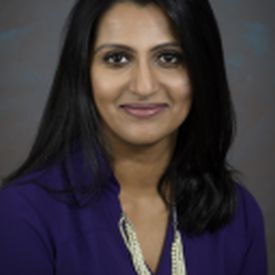Enhancing secondary school learning: Role of remedial camps and teacher flexibility
A key dilemma in Indian education is that while children are enrolled in school, they are not actually learning. Based on an experiment in Odisha, this article explores possible solutions to the learn...
-
 Sabrin Beg
Sabrin Beg  Anne Fitzpatrick
Anne Fitzpatrick  Jason Kerwin
Jason Kerwin  Adrienne Lucas
Adrienne Lucas  Khandker Wahedur Rahman
Khandker Wahedur Rahman  08 April, 2024
08 April, 2024
- Articles
Improving healthcare access to address the rise in non-communicable diseases among Indian women
In light of the changing healthcare burden for women, with a rise in mortality due to non-communicable diseases, Bhan and Shukla outline the incidence of diseases in Indian states over the last two de...
-
 Nandita Bhan
Nandita Bhan  Prajakta Pradip Shukla
Prajakta Pradip Shukla  22 December, 2023
22 December, 2023
- Perspectives
The ‘invisible’ disability of mental illness: Barriers to social security access
Sakshi Sharda writes about the how a lack of clarity on the assessment and diagnosis of mental health and poor implementation of social security schemes increases the vulnerability of those livings wi...
-
 Sakshi Sharda
Sakshi Sharda  10 October, 2023
10 October, 2023
- Perspectives
India’s early years mathematics curriculum: Continuity, discontinuity and progression
Research has shown the importance of building strong foundations for learning, as the development of cognitive skills in preschool and early primary years is predictive of later mathematical achieveme...
-
 Benjamin Alcott
Benjamin Alcott  Suman Bhattacharjea
Suman Bhattacharjea  Caroline Dyer
Caroline Dyer  Aashna Khurana
Aashna Khurana  Purnima Ramanujan
Purnima Ramanujan  02 January, 2023
02 January, 2023
- Articles
Challenges in access to secondary education in India
India’s latest National Education Policy has envisaged universal access to education by 2030. However, while enrolment is high in elementary schools, access to and uptake of secondary education has ...
-
 Mridusmita Bordoloi
Mridusmita Bordoloi  Sharad Pandey
Sharad Pandey  09 November, 2022
09 November, 2022
- Perspectives
Tracking learning outcomes: ASER’s work through the pandemic
With the onset of the Covid-19 pandemic and the associated lockdowns, schools quickly pivoted to online learning. However, there was limited information about whether children had access to learning m...
-
 Rukmini Banerji
Rukmini Banerji  Wilima Wadhwa
Wilima Wadhwa  31 October, 2022
31 October, 2022
- Videos
Tracking learning outcomes: ASER’s work through the pandemic
With the onset of the Covid-19 pandemic and the associated lockdowns, schools quickly pivoted to online learning. However, there was limited information about whether children had access to learning m...
-
 Rukmini Banerji
Rukmini Banerji  Wilima Wadhwa
Wilima Wadhwa  31 October, 2022
31 October, 2022
- Podcasts
Insuring India: PM-JAY’s targeting problem
India’s largest health insurance programme is targetted at poor and vulnerable populations who would be least able to afford medical care. However, this article by Chhabra and Smith shows that a lar...
-
 Sheena Chhabra
Sheena Chhabra  Owen Smith
Owen Smith  19 October, 2022
19 October, 2022
- Articles
The future of old times
India needs to plan for a radical expansion of public support for the elderly. In this piece, Drèze and Duflo argue that near-universal social security pensions would be a good start. Elderly persons...
-
 Jean Drèze
Jean Drèze  Esther Duflo
Esther Duflo  26 September, 2022
26 September, 2022
- Perspectives
High scoring but poor: The misallocation of talent in higher education
As labour market returns to college education have increased, more young adults now receive some form of higher education than ever before. Yet, college attendance remains low for children from poor s...
-
 Andres Yi Chang
Andres Yi Chang  Jishnu Das
Jishnu Das  Abhijeet Singh
Abhijeet Singh  08 September, 2022
08 September, 2022
- Articles
Illam Thedi Kalvi: A booster shot for post-Covid education
Amidst worries about learning loss caused by school closures during the Covid-19 pandemic, Tamil Nadu's Illam Thedi Kalvi (ITK) – a volunteer-based education programme – has played a vital role in...
-
 Sarthak Agrawal
Sarthak Agrawal  05 September, 2022
05 September, 2022
- Notes from the Field
Access to antenatal care and its influence on children’s cognitive development
Research has shown that maternal health affects later-life outcomes of children. Using data from the Young Lives survey in Andhra Pradesh and Telangana, this article shows that antenatal care has an i...
-
 Neha Adsul
Neha Adsul  Sarthak Gaurav
Sarthak Gaurav  Priya Rampal
Priya Rampal  29 August, 2022
29 August, 2022
- Articles
The impact of community-based depression treatment in India
Although the prevalence of depression may have adverse economic impacts, especially in developing countries, treatment options in India are limited by a shortage of providers. This article looks at th...
-
 Manuela Angelucci
Manuela Angelucci  Daniel Bennett
Daniel Bennett  23 August, 2022
23 August, 2022
- Articles
Remedying poor student assessment data in India
Taking into account existing evidence on the accuracy of administrative data on student learning levels in India, Singh and Ahluwalia discuss why a reliable system of student assessment matters; fixin...
-
 Rahul Ahluwalia
Rahul Ahluwalia  Prakhar Singh
Prakhar Singh  26 July, 2022
26 July, 2022
- Perspectives
To invest in sanitation or not? The role of gender differences in perceptions
Although sanitation is essential for health, many households remain without a toilet due to financial constraints. This article describes the extent to which perceptions of costs and benefits of sanit...
-
 Britta Augsburg
Britta Augsburg  Bansi Malde
Bansi Malde  Harriet Olorenshaw
Harriet Olorenshaw  Zaki Wahhaj
Zaki Wahhaj  22 July, 2022
22 July, 2022
- Articles
Twitter feed
Tweets by Ideas4IndiaMost Popular Human Development Posts
Hindu-Muslim fertility differentials in India: District-level estimates from Census 2011
The 2011 Indian Census data show a higher growth rate of Muslim population compared to the Hindu population. This article provides an in-depth picture of Hindu-Muslim fertility differentials at the di...
 Saswata Ghosh
Saswata Ghosh  27 March, 2019
27 March, 2019
- Articles
Ten steps to transform the quality of education in India
In this article, Sridhar Rajagopalan, Managing Director of Educational Initiatives, suggests 10 initiatives that can help transform the quality of education in India.
 Sridhar Rajagopalan
Sridhar Rajagopalan  19 November, 2015
19 November, 2015
- Perspectives
Understanding India’s mental health crisis
Since the onset of the Covid-19 pandemic, several reports have indicated a worsening of mental health issues among individuals across age groups. In this post, Michele Mary Bernadine examines the stat...
 Michele Mary Bernadine
Michele Mary Bernadine  06 April, 2021
06 April, 2021
- Perspectives





 20 December, 2023
20 December, 2023






